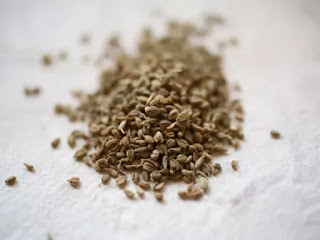Is thyme and ajwain same?
Is thyme and ajwain same?
1. Origin and Geography:
Thyme:
- Thyme (Thymus vulgaris) is native to the Mediterranean region and is a member of the mint family (Lamiaceae).
- It has been used in Mediterranean, European, and Middle Eastern cuisines for centuries.
Ajwain:
- Ajwain (Trachyspermum ammi), also known as carom seeds, is native to the Indian subcontinent and is a member of the Apiaceae family.
- It is a common spice used in Indian, Pakistani, and Middle Eastern cuisines.
2. Appearance:
Thyme:
- Thyme leaves are small and green, with a subtle grayish-green hue.
- The leaves grow on woody stems and are typically tiny and needle-like.
Ajwain:
- Ajwain seeds are tiny, oval-shaped, and light brown to olive-green in color.
- They have a rough texture and are often mistaken for cumin seeds due to their appearance.
3. Flavor Profile:
Thyme:
- Thyme imparts a warm, earthy, and slightly minty flavor with subtle citrus undertones.
- It is often used in savory dishes, such as roasts, stews, and soups.
Ajwain:
- Ajwain has a strong, pungent, and slightly bitter taste with notes of thyme and cumin.
- It is mainly used in Indian and Middle Eastern cuisines, particularly in bread, lentil dishes, and pickles.
4. Culinary Uses:
Thyme:
- Thyme is a versatile herb used in a wide range of dishes, including Mediterranean cuisine, French cuisine, and stuffing for poultry.
- It pairs well with vegetables, poultry, lamb, and fish.
Ajwain:
- Ajwain is primarily used in Indian bread, such as parathas and naan, for its distinct flavor.
- It is also used as a digestive aid and added to various lentil and bean dishes.
5. Medicinal Properties:
Thyme:
- Thyme is known for its medicinal properties and is used in herbal remedies for coughs, sore throats, and respiratory issues.
- It contains thymol, an active compound with antiseptic and anti-inflammatory properties.
Ajwain:
- Ajwain seeds are renowned for their digestive benefits and are often consumed after meals to alleviate bloating and indigestion.
- They contain thymol as well, which contributes to their medicinal properties.
Conclusion:
In summary, while thyme and ajwain may share some visual similarities, they are distinct herbs with different flavors, origins, and culinary applications. Thyme is a staple in Mediterranean and European cuisines, known for its earthy and minty notes, whereas ajwain is a key ingredient in Indian and Middle Eastern dishes, appreciated for its pungent and aromatic qualities. Understanding the differences and unique characteristics of these herbs can greatly enhance your culinary adventures.



0 Comments